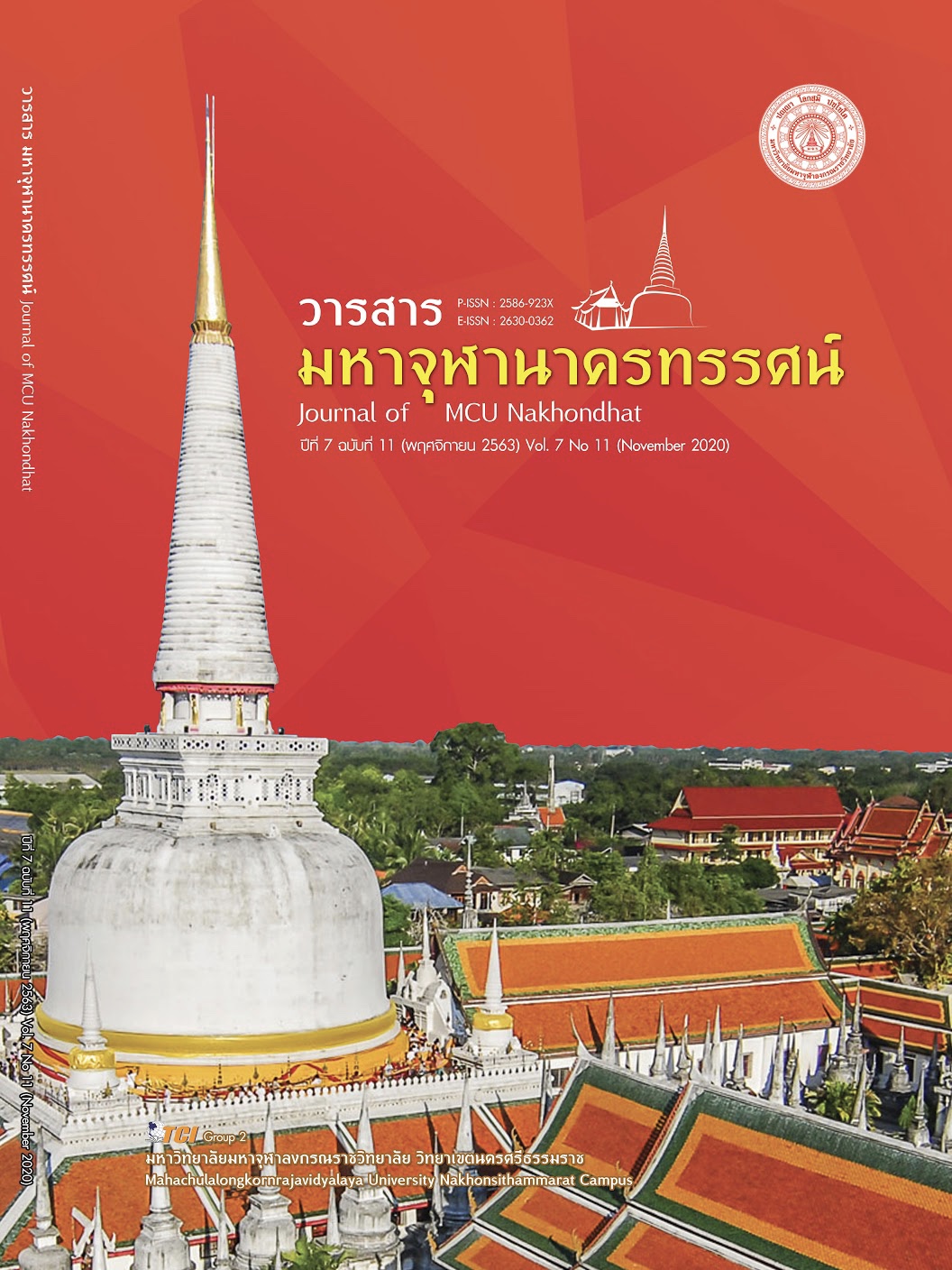DEVELOPMENT OF ORGANIC INTELLIGENT TECHNOLOGY SYSTEM
Main Article Content
Abstract
The objectives of this article were: to develop a smart technology system for organic farming; to find out the efficiency a smart technology system for organic farming and evaluate a quality of the smart technology system developed by the researcher;The concept of technological process has been applied to develop a smart farming technology system together with the IOT (Internet of Things) technology. Further, using a ready - made application for IOT called the Blynk Application via a smartphone is also applied to work with microcontroller board Node MCU ESP8266, Temperature sensor device DHT21 , capacitive soil moisture senser while solar energy is used as a power supply. Then, the organic smart farming technology system developed by the researcher was taken to try - out to find its efficiency in controlling the operation of sensor devices and evaluated its quality by experts design equipment materials and use. Finally, the results were statistically analyzed for percentage, mean, and standard deviation. The study found that: 1) The smart organic farming technology system developed by the researcher consists of: 1.1) the curved - roof greenhouse (6 x 6 m2 ) 3 meters high, surrounded by white insect repellent net, the roof is covered with clear plastic; 1.2) the temperature controlling system in the greenhouse and the soil moisture controlling system; 1.3) the application for sensor controlling through a smartphone; 1.4) the motion picture system through wireless CCTV; and 1.5) the solar energy production system. 2) According to the overall performance of the system, the operation of sensor could be able to control accounted for 100%. In addition, the overall quality of smart organic farming technology system is at the highest level ( = 4.79, S.D. = 0.42)
Article Details
References
จีระศักดิ์ วงษ์บงกชไพศาล และคณะ. (2562). โปรแกรมทดสอบอุณหภูมิและความชื้นในดินสำหรับโรงเรือนอัจฉริยะเพื่อใช้ปลูกผักออแกนิกส์. ใน การประชุมวิชาการและพัฒนาเชิงประยุกต์ครั้งที่ 11. มหาวิทยาลัยอุบลราชธานี.
ธนากร น้ำหอมจันทร์ และอติกร เสรีพัฒนานนท์. (2556). ระบบควบคุมอุณหภูมิและความชื้นสัมพัทธ์ในโรงเรือนเพาะปลูกพืชไร้ดิน แบบทำความเย็นด้วยวิธีการระเหยของน้ำร่วมกับการสเปรย์ละอองน้ำแบบอัตโนมัติ โดยใช้ระบบควบคุมเชิงตรรกะแบบโปรแกรมได้. วารสารวิชาการมหาวิทยาลัยอีสเทิร์นเอเชีย ฉบับวิทยาศาสตร์และเทคโนโลยี, 8(1), 98-111.
ธนาคารแห่งประเทศไทย. (2563). ภูมิทัศน์ภาคเกษตรไทย จะพลิกโฉมอย่างไรสู่การพัฒนาที่ยั่งยืน. เรียกใช้เมื่อ 22 มีนาคม 2563 จาก https://www.bot.or.th/Thai/Research AndPublications/articles/Pages/Article_26Sep2019.aspx
รัตติกานต์ วิบูลย์พานิช. (2560). การออกแบบตัวต้นแบบระบบโรงเรือนอัจฉริยะเพื่อส่งเสริมความสะดวกสบายให้กับผู้สูงอายุ โดยใช้เทคโนโลยีอินเทอร์เน็ตเพื่อทุกสรรพสิ่ง. ใน รายงานวิจัย. มหาวิทยาลัยนอร์ทกรุงเทพ.
ลิขิต อ่านคำเพชร และธงรบ อักษร. (2560). โรงเพาะเห็ดนางฟ้าอัจฉริยะ การวิจัย 4.0 เพื่อการพัฒนาประเทศสู่ความมั่นคง มั่งคั่ง และยั่งยืน. ใน การประชุมวิชาการและนำเสนอผลงานวิจัยระดับชาติ ราชธานีวิชาการ ครั้งที่ 2. มหาวิทยาลัยราชธานี.
สถาบันการจัดการเทคโนโลยีและนวัตกรรมเกษตร. (2563). โรงเรือนพลาสติกเพื่อการผลิตพืชผักคุณภาพ. เรียกใช้เมื่อ 28 กรกฎาคม 2563 จาก https://www.nstda.or.th/ agritec/greenhouse/
สถาบันการจัดการเทคโนโลยีและนวัตกรรมเกษตร. (2563). โรงเรือนอัจฉริยะนวัตกรรมตอบโจทย์เกษตร 4.0. เรียกใช้เมื่อ 11 มิถุนายน 2563 จาก https://www.nstda.or.th/ agritec/78-featured-article/303-smart-green-house/
สาขาออกแบบเละเทคโนโลยี. (2554). กระบวนการเทคโนโลยี. กรุงเทพมหานคร: สถาบันส่งเสริมการสอนวิทยาศาสตร์และเทคโนโลยี.
อรพรรณ แซ่ตั้ง และคณะ. (2560). การออกแบบโรงเรือนสาหรับควบคุมอุณหภูมิและความชื้น โดยใช้เทคโนโลยีอินเทอร์เน็ตของสรรพสิ่ง เพื่อส่งเสริมการเพาะเลี้ยงเห็ดแครง. วารสารการอาชีวะและเทคนิคศึกษา, 7(13), 87-97.


